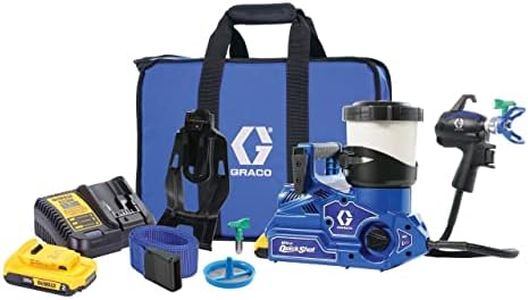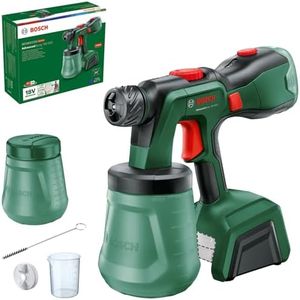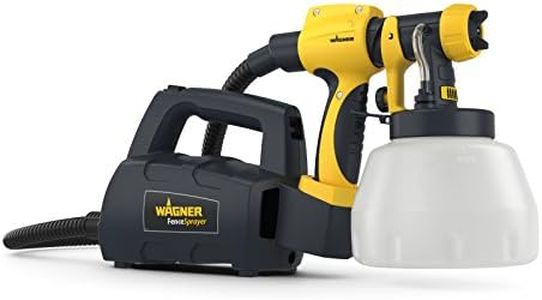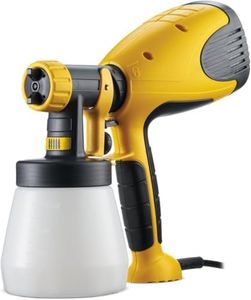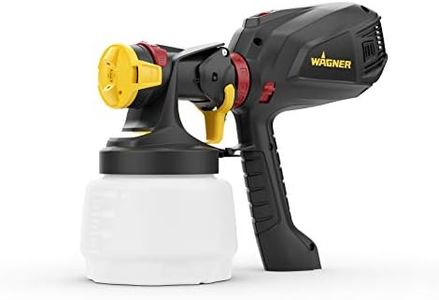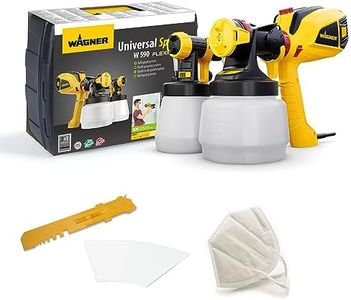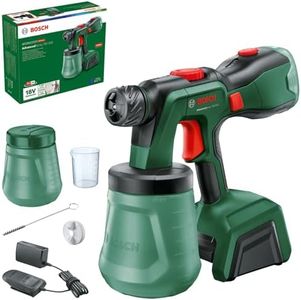We Use CookiesWe use cookies to enhance the security, performance,
functionality and for analytical and promotional activities. By continuing to browse this site you
are agreeing to our privacy policy
10 Best Handheld Paint Sprayers
From leading brands and best sellers available on the web.Buying Guide for the Best Handheld Paint Sprayers
Handheld paint sprayers make painting large surfaces faster and more even compared to traditional brushes or rollers. Choosing the right model can transform your painting experience—saving time, reducing effort, and giving professional-looking results. When selecting a handheld paint sprayer, it’s helpful to understand the key features so you can match your choice to the type of projects you have in mind and the kinds of paints or finishes you'll use.Type of SprayerThe type of handheld paint sprayer determines how it moves and applies paint. Common types include airless, HVLP (high-volume, low-pressure), and compressed air sprayers. Airless sprayers pump paint at high pressure and are great for large surfaces and thicker paints. HVLP sprayers use a steady air stream, making them suitable for detail work and achieving a smooth finish with thinner materials. Compressed air sprayers deliver a fine finish but can be messier and often require a separate air compressor. Think about what you need: for broad walls and exterior surfaces, an airless model works best, while furniture and detailed projects might benefit from HVLP. Your primary tasks should guide your choice.
Paint Flow ControlPaint flow control allows you to adjust how much paint is sprayed and how quickly. This feature gives you the power to fine-tune the finish based on your project size and paint type. Lower flow settings are perfect for smaller items or when you want precision, while higher flows speed things up for big walls or fences. Look for adjustable controls on any sprayer; picking one with easy adjustment lets you adapt to different projects and minimizes waste or mess.
Nozzle SizeThe nozzle size determines how finely the paint is sprayed and influences the types of materials the sprayer can handle. Smaller tips work better for thin paints and fine work, such as varnishes or stains used on furniture. Larger tips handle thicker paints like latex, suited for walls or outdoor surfaces. Many models include interchangeable nozzles, so consider the range available and pick based on whether you'll use mostly thick or thin paints.
Paint CapacityPaint capacity refers to how much paint the sprayer's container can hold at once. Larger capacities mean fewer stops to refill, which is useful for big projects like walls or fences. Smaller containers are lighter and can be less tiring for smaller jobs or detailed work. Choose capacity based on the size and duration of your projects—bigger isn't always better if you want comfort and ease of use for small tasks.
Weight and ErgonomicsWeight and ergonomics determine how comfortable a paint sprayer is during use, which is especially important when painting for longer periods. Heavier models may cause fatigue, while well-designed handles and balanced weight help reduce strain. Test or check reviews on comfort and consider your own strength—if you'll paint ceilings or overhead surfaces, lighter models can make the job more pleasant.
Ease of CleaningCleaning after painting can be time-consuming if a sprayer is complicated to take apart. Models designed for easy cleaning—maybe with detachable parts or helpful cleaning tools—will save you hassle. Think about how often you'll use your sprayer; if you expect frequent projects, a model that makes cleanup quick and easy is worth considering for long-term convenience and maintenance.

